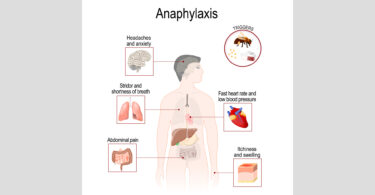Originally published by https://cleverhthemag.com/ 5-31-2018
Sugar in our culture
We are a culture addicted to sugar, not only directly in sweets, cakes and chocolates but also indirectly, in many processed foods and drinks.How often do we use something sweet for comforting a child or our own inner child?The health implications of our love affair with sugar makes diabetes and obesity major health issues in many counties around the world.
What is it?
Perhaps surprisingly, or not, Sugar cane has become an increasingly indicated homeopathic prescription.Tinus Smitsintroduced his proving of theremedy made from sugar cane to the homeopathic community in 1995. Full information on the remedy can be found on the CEASE website along with a number of sample cases: http://www.tinussmits.com/3881/synthesis.aspx
Melissa Assilem wrote about sugar in her book The Mad Hatter’s Tea Party (pub. by the Homeopathic Supply Company UK in 1994), along with Tea (Thea), Coffee (Coffea) andmother’s milk (Lac humanum).Saccharum officinarum should be ordered as Sugar Cane Smits from the Homeopathic Pharmacy. I believe that Melissa Assilem refers to potentised white sugar rather than Sugar cane.
There are also homeopathic proving of Saccharum album referred to as ‘the spoiled child’ by Vermulen in his excellent Synoptic Materia Medica ll (1996) and Saccharum lactis ‘the abandoned child’. Homeopathic pills and tablets are made from unpotentised sucrose and sac lac (milk sugar).
Saccharum officinale is made from the fresh juice of the sugar-cane, containing minerals and trace elements as Calcium, Copper, Phosphorus, Magnesium, Sodium, Potassium, Iron, Sulphur, Zinc and Chromium. It is useful for malnutrition and various mineral and vitamin deficiencies (F.J. Master 2006)
Saccharum officinarum symptoms
The essence of the remedy or key components of the remedy are:
- no emotional contact or seeking love
- sibling rivalry
- hyperactivity
- insatiable appetite
How the remedy is used
The remedy can be given in a daily dose 6x or 6c to support the digestive system. This might be alongside a constitutional remedy. CEASE practitioners might be giving a constitutional Saturday remedy, a twice weekly detox remedy and supporting the digestive system with Saccharum on a daily basis.The remedy can be given in its own right as a constitutional remedy in potency to suit the energy and vitality of the case.It may be given as an intercurrent remedy to complement the work of another remedy.
How I use the remedy in my practice
Case 1
Boy aged four diagnosed with Autism Spectrum Disorder one year previously. Responded very well to the homeopathic remedies Tuberculinum and Lac leoninum, however he remained intensely jealous of his younger brother. Sharing with brother is very hard; also jealous of mother and father talking to each other. Refers to mother as ‘my mummy’. Pinches, pushes, hits brother. If playing ball tries to hit his brother with it.Within one week of Saccharum off 6c daily he was much calmer towards his brother. He no longer saw competition in every step. They didn’t fight at the weekend. Could really see the difference said his mother; ‘You are a true miracle worker’!
Case 2
Boy aged 10 who was on the Autism Spectrum. Over a number of yearshe had responded very well to Baryta carb and Medorrhinum.His mother reported that currently the problems were focused on the digestive sphere, rather than learning or behaviour. He had a yellow complexion; was burping, farting and gassy; had a poor appetite; was fussy about food and weak and tired when walking.I prescribed Saccharum off 6c once per day for a month. After one month his mother reported that he now had a normal skin tone and rosycheeks. He now had a good appetite and was eating big portions; the fussiness had gone. He was stronger and ran a bit.
Case 3
Boy aged 21 months with eating problem; he would only eat cookies, sweets, chocolate and milk. I tried a number of remedies for him without success: Lycopodium, Gaertner, Cepalexin, and Tuberculinum. Otherwise he was happy and there were no other problems and growth was fine. I then prescribed Saccharum officinarum 6c daily for a month. His mother declaredthat he was much better with eating, interested in what is on the mother’s plate. His sleep pattern also improved.
A key symptom of the remedy is ‘Dainty and capricious children; care nothing for substantial food, but want little ‘nick-nacks’ (Clarke) Likes tidbits and refuses substantial food (F.J.Master 2006)
Case 4
Boy aged 4 years 9 months with diagnosis of Autism Spectrum Disorder attending a Special needs Nursery. Two maternal aunts with diabetes in their 50’s. Mother had Gestational diabetes at 28 weeks. Mother felt that she never connected with him when she was pregnant. Development had been normal, but slow; noticed change at two years old. He was observed lining up toys in the consultation. He was described as too passive. He never asks for toilet. Never cries or upset if you take something from him. Little eye contact.
Prescription Saccharum officinarum 30c weekly.
Follow up three months later. He was understanding a lot more than before and more responsive. He looks at mother if she calls him. Saying a few words, writing better. More active – was very passive before. No longer lining up toys, drawing instead. He snatched a toy from another child for the first time at nursery. He was now going to the toilet by himself to urinate, no longer wearing a nappy; at the first consultation he was never even asking for the toilet. He was generally more active after the remedy.
A panacea for Autism Spectrum Disorder?
Unfortunately not. There are other cases where I have given the remedy with little or minimal effect. And although it has an affinity with the digestive system, if it is not the correct remedy for the child, it will not help and a better fitting remedy needs to be found. One case, again with a history of gestational diabetes in pregnancy like Case 4, only experienced improvements in sleep and constipation but was not helped in any other way. Another case with severe constipation did not respond to the remedy, but needed an MMR vaccine detox to achieve a 50% improvement in bowel function and an Aluminium detox to achieve a 95% improvement in bowel function. As Autism is such a complex mutifactorial condition, it is recommended that parents consult a qualified and experienced homeopath for their child rather than trying to self treat.
What other remedies can Saccharum officinarum be compared to
Tinus Smits suggests on his posthumously maintained website http://www.tinussmits.com/3870/saccharum-officinale.aspx
The resemblance that struck me the most was with Belladonna, Calcarea carbonica, Carcinosin, Chamomilla, Cuprum metallicum, Lachesis, Lycopodium, Opium, Stramonium and Tuberculinum.
I would add Pulsatilla to that list as well for the forsaken child, as they share 215 rubrics. The various Lac (milk) remedies and Matridonal remedies should also be compared.
It should be noted that Carcinosin, Saccharum and Thuja are the three remedies listed for a family history of diabetes. This raises the question of whether this remedy will be indicated more and more with the rise of diabetes.
Rubrics
Tinus Smits
http://www.tinussmits.com/3881/synthesis.aspx#children
Single symptoms of Sacch (Saccharum officinarum) from Synthesis Treasure Edition 2009 Schroyens F.
MIND – ANTISOCIAL – children; in
MIND – BITING – nails – toenails – children; in
MIND – CUDDLE – desire to be cuddled
MIND – DELUSIONS – criticized, she is – children; in
MIND – DELUSIONS – loved by parents; she is not
MIND – DELUSIONS – neglected – he or she is neglected – children; in
MIND – GESTURES, MAKES – fingers – mouth; children put fingers into the – Night
MIND – IRRITABILITY – breakfast – after – amel.
MIND – IRRITABILITY – breakfast – until
MIND – MALICIOUS – children; in
MIND – MALICIOUS – chocolate, after
MIND – MALICIOUS – sweets; after
MIND – MODESTY, INCREASED
MIND – QUARRELSOME – children; in – sweets; after
MIND – RESTLESSNESS – children, in – sweets; after
MIND – RESTLESSNESS – sitting, while – children; in
MIND – SADNESS – sweets; after
MIND – SENSITIVE – pain, to – children; in
References
http://www.tinussmits.com/3881/synthesis.aspx
The Mad Hatter’s Tea Party M. Assilem 1994 Homeopathic Supply Company UK
Tinus Smits Synthesis of Saccharum Officinale p31-32 Homeopathic Links 3/95





wonderful explanation. very informative. i am eager to know more explanation about globules contents & safety matter to use in diabetes cases.
Hi Venkatesh the globules are made according to standard homeopathic pharmacopoeia, the remedy could also be given in liquid form if preferred or lactose based tablets rather than sucrose. I have only used the remedy in pediatric cases not in diabetic cases so can not advise about this.